Kamakura is a small town near Tokyo that once served as a political and cultural center of Japan and the birthplace of samurai society. Today, it is a popular day trip destination from Tokyo, offering a perfect escape from the city’s fast-paced environment. In Kamakura, you can explore not only its rich historical sites but also its beautiful natural surroundings.
Content:
Why Visit Kamakura?
If you’re looking to take a break from the hectic pace of Tokyo or dive deep into Japanese culture, a day trip to Kamakura is an excellent choice. Walk along Komachi Street to sample local Japanese specialties and buy handmade crafts.
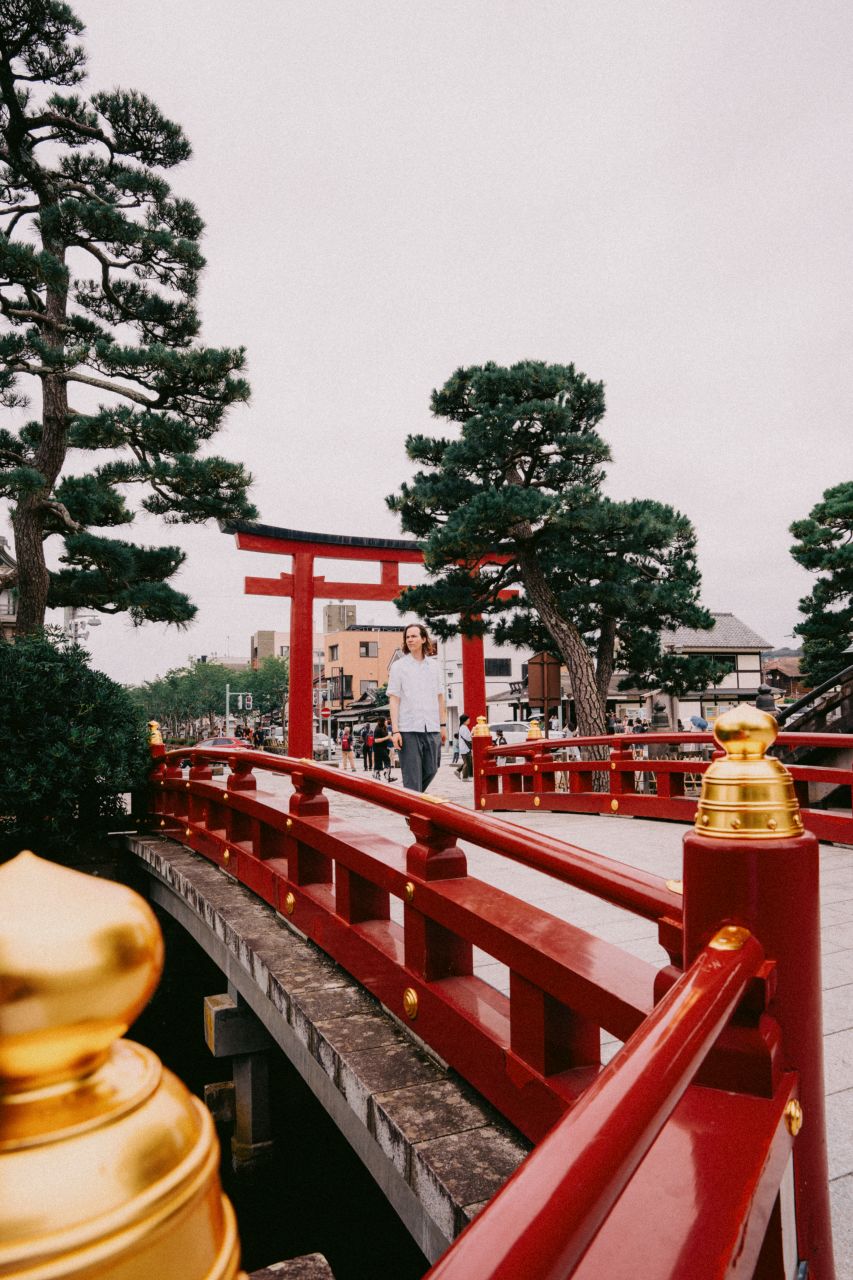
Visit one of Japan’s largest Great Buddha statues at Kotoku-in Temple, or explore Tsurugaoka Hachimangu Shrine, where samurai society was born. For a more serene experience, head to Hokokuji Temple to explore its tranquil bamboo grove and Zen gardens. All of these experiences can be enjoyed during a single day trip to Kamakura.
How to Get to Kamakura from Tokyo
Reaching Kamakura from Tokyo is easy by train. Depending on your starting point, you can take the JR Yokosuka Line from Tokyo Station or the JR Shonan-Shinjuku Line from Shinjuku Station. The journey takes about an hour. You can use an IC card (like Suica or Pasmo) by tapping it when entering and exiting the stations.
💶 Price
Tickets: A one-way ticket from Tokyo to Kamakura costs around 1,000 yen (approximately 6.3 Euros or 7 USD).
Top Things to Do in Kamakura (Must-See Attractions)
1. Tsurugaoka Hachimangu Shrine
Our first stop was Tsurugaoka Hachimangu, Kamakura’s most important shrine. This is where Japan’s samurai society was established centuries ago. The shrine is dedicated to Hachiman, the god of war, who was worshipped by the samurai.
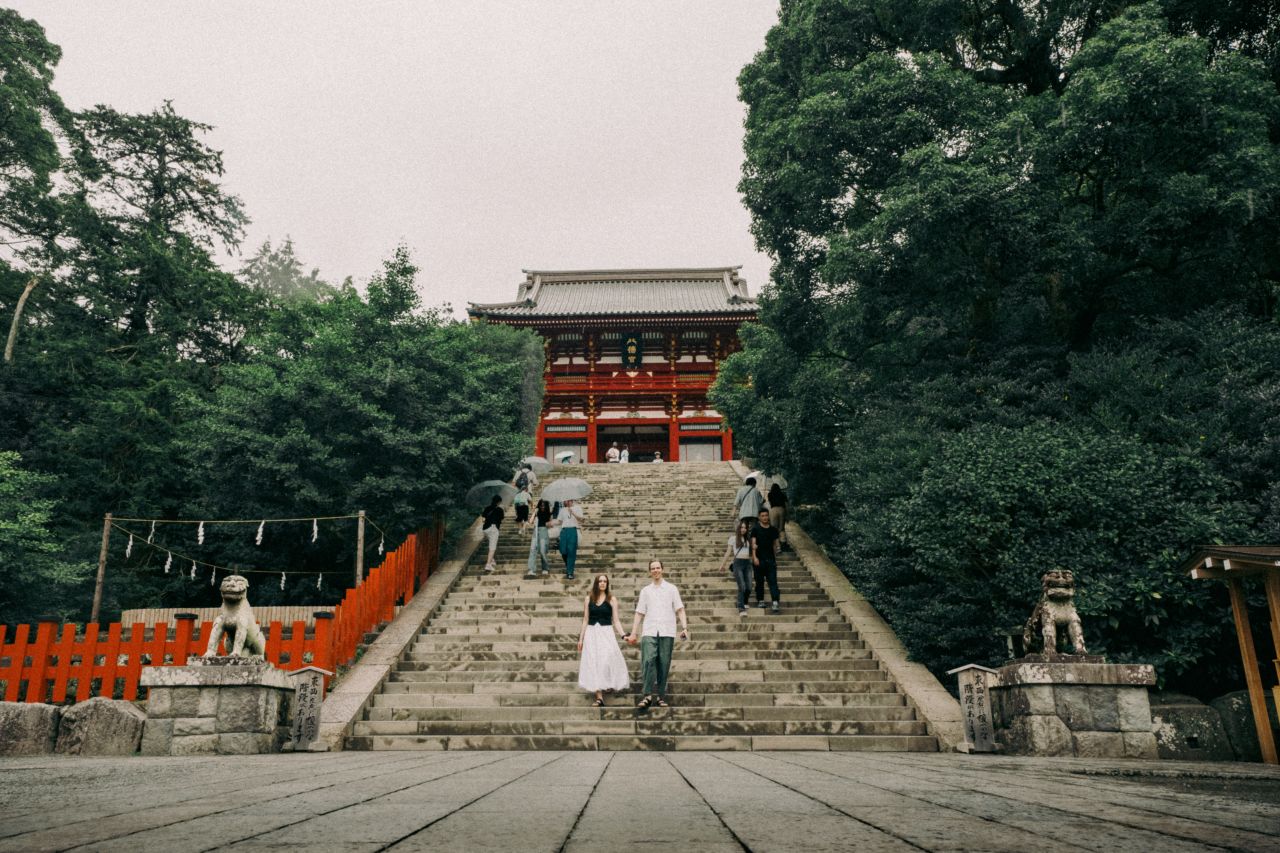
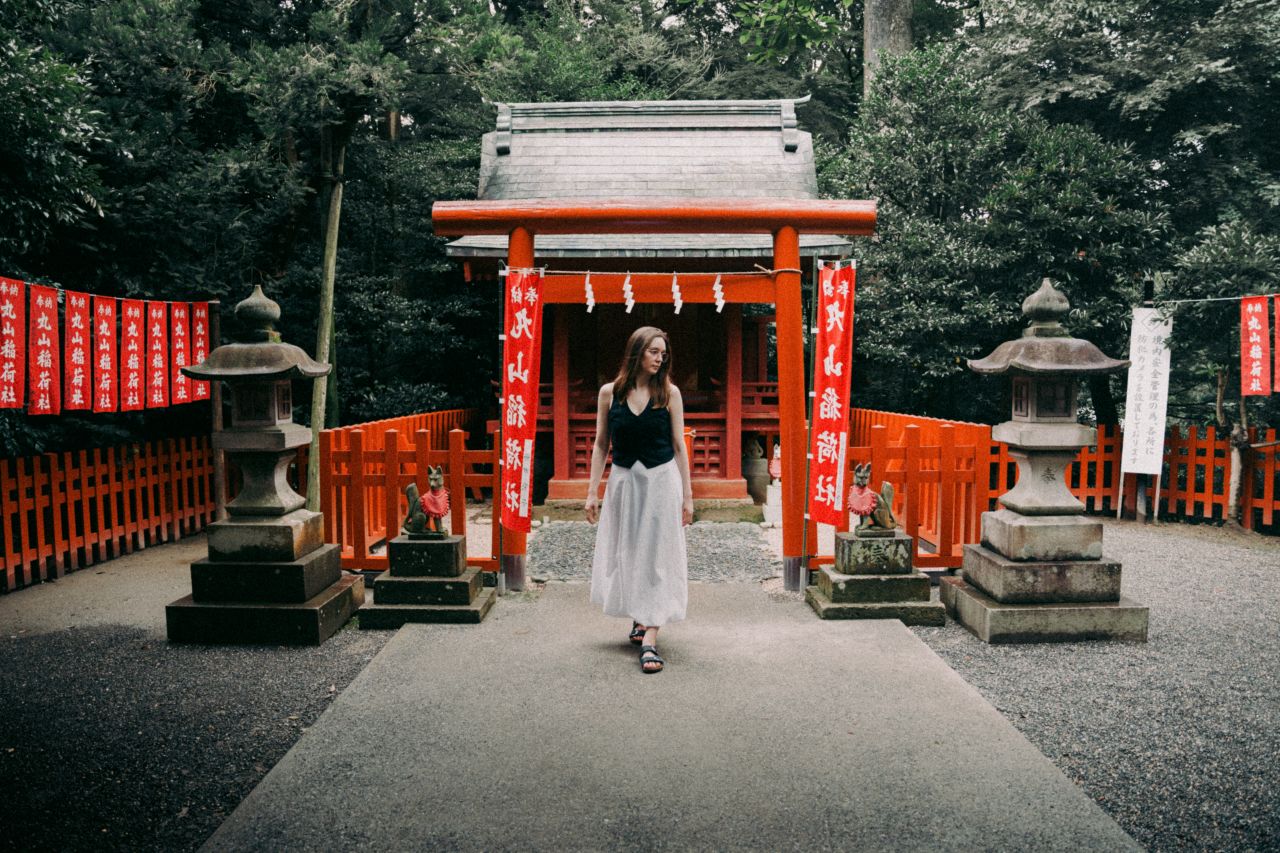
As you enter the shrine, you pass by two ponds on either side. One pond, with three islands, represents the Minamoto Clan, while the other, with four islands, represents their arch-rivals, the Taira Clan. The number four is considered unlucky in Japanese culture because it sounds like the word for “death.” The entire city of Kamakura was built around this shrine.
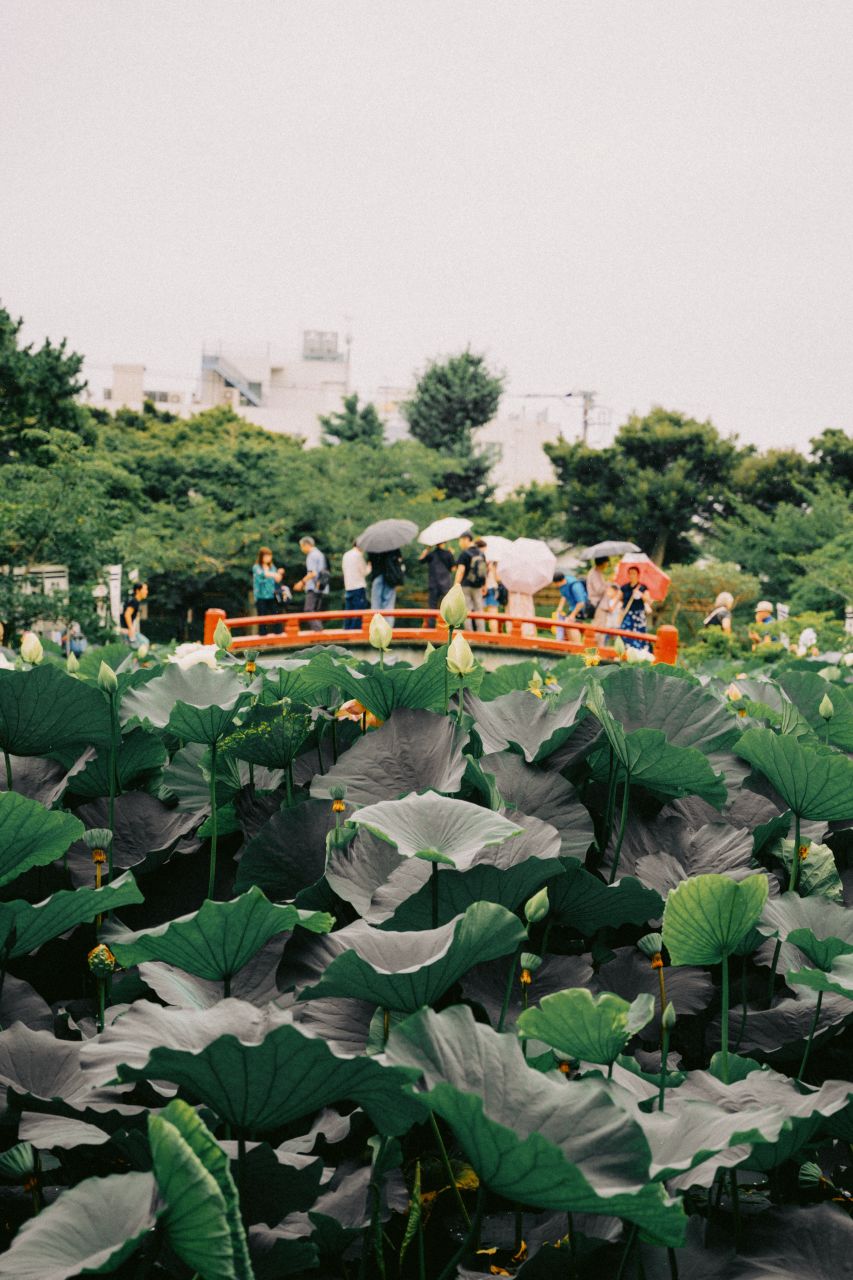
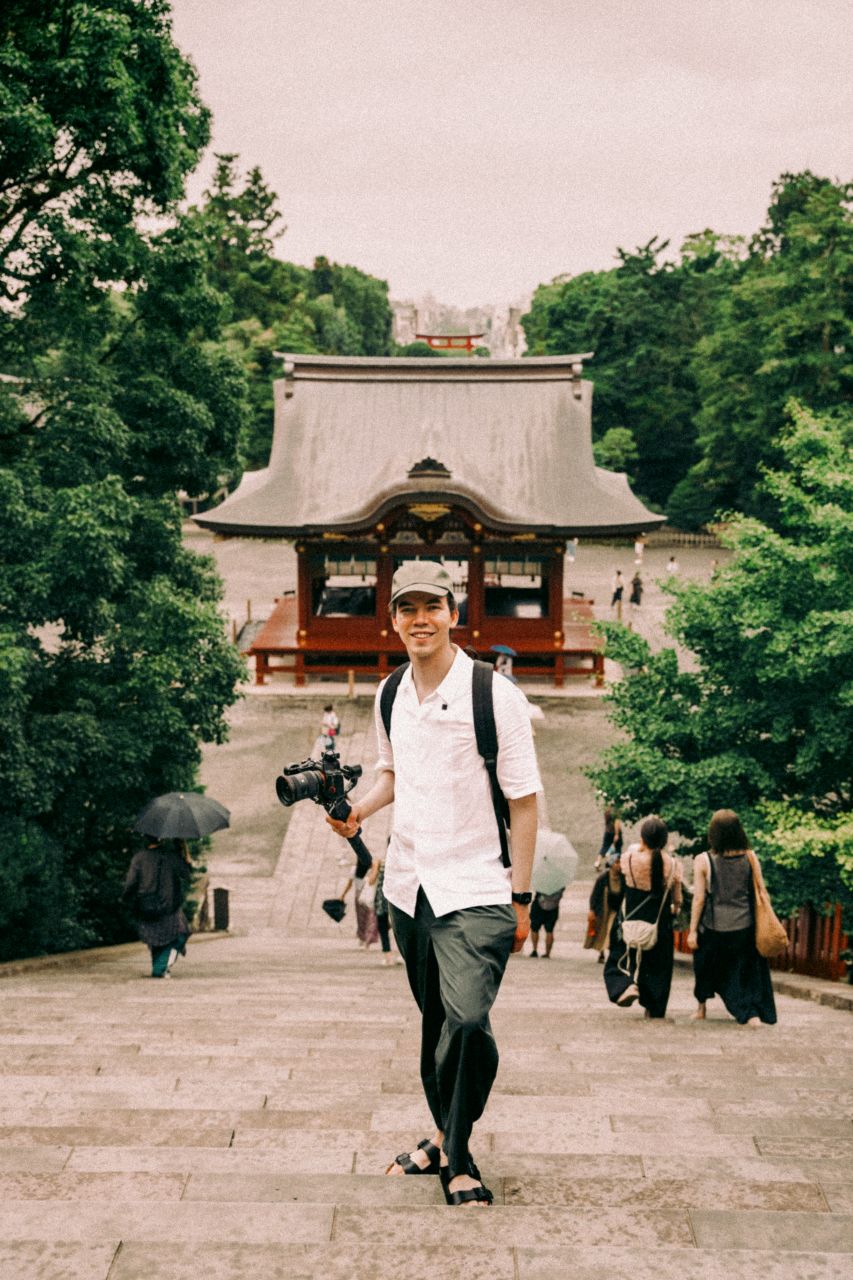
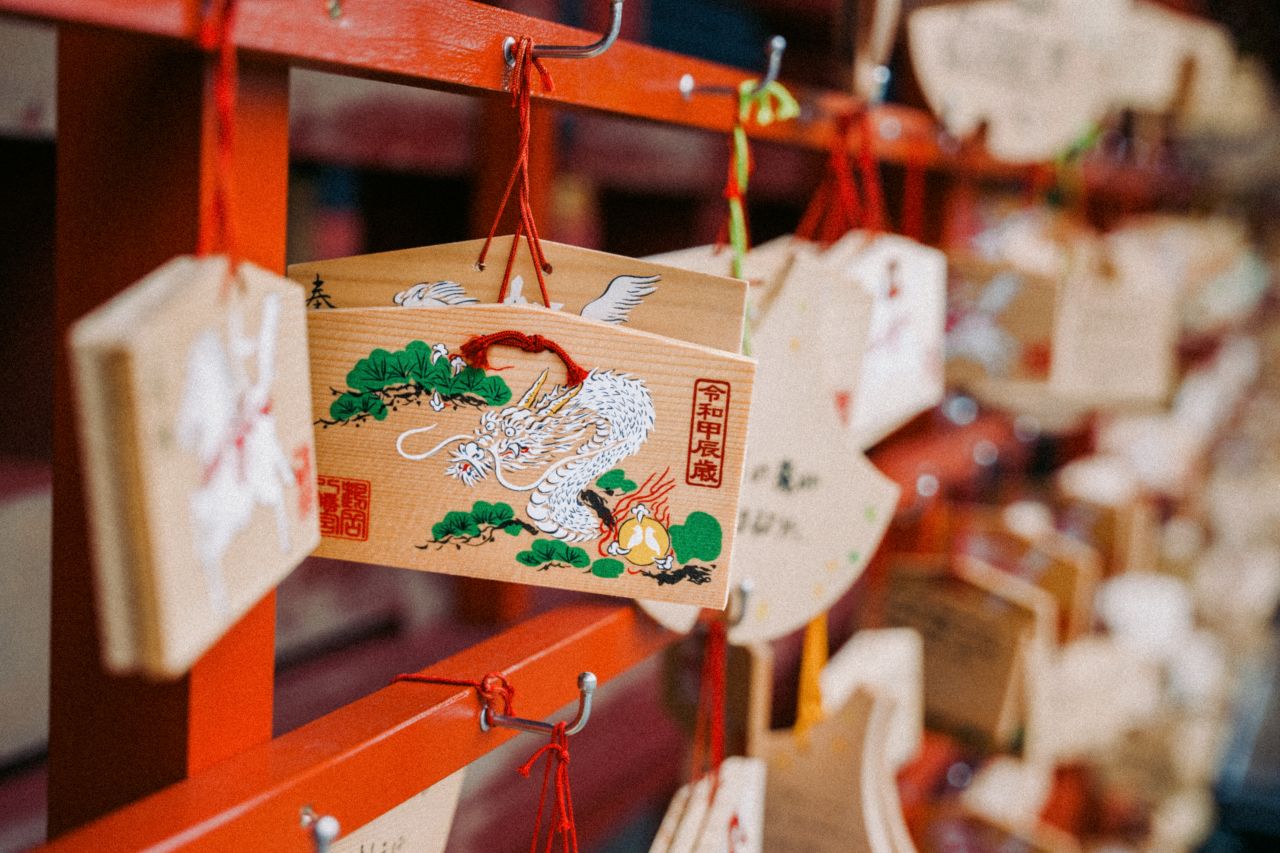
💶 Price: Free
🕒 Opening hours: 6 am to 8 pm
Not time to read now? Save it for later!
2. Hokokuji Temple (Kamakura’s Bamboo Temple)
A short bus ride from Tsurugaoka Hachimangu Shrine brings you to Hokokuji Temple, a small temple of the Rinzai sect of Zen Buddhism.
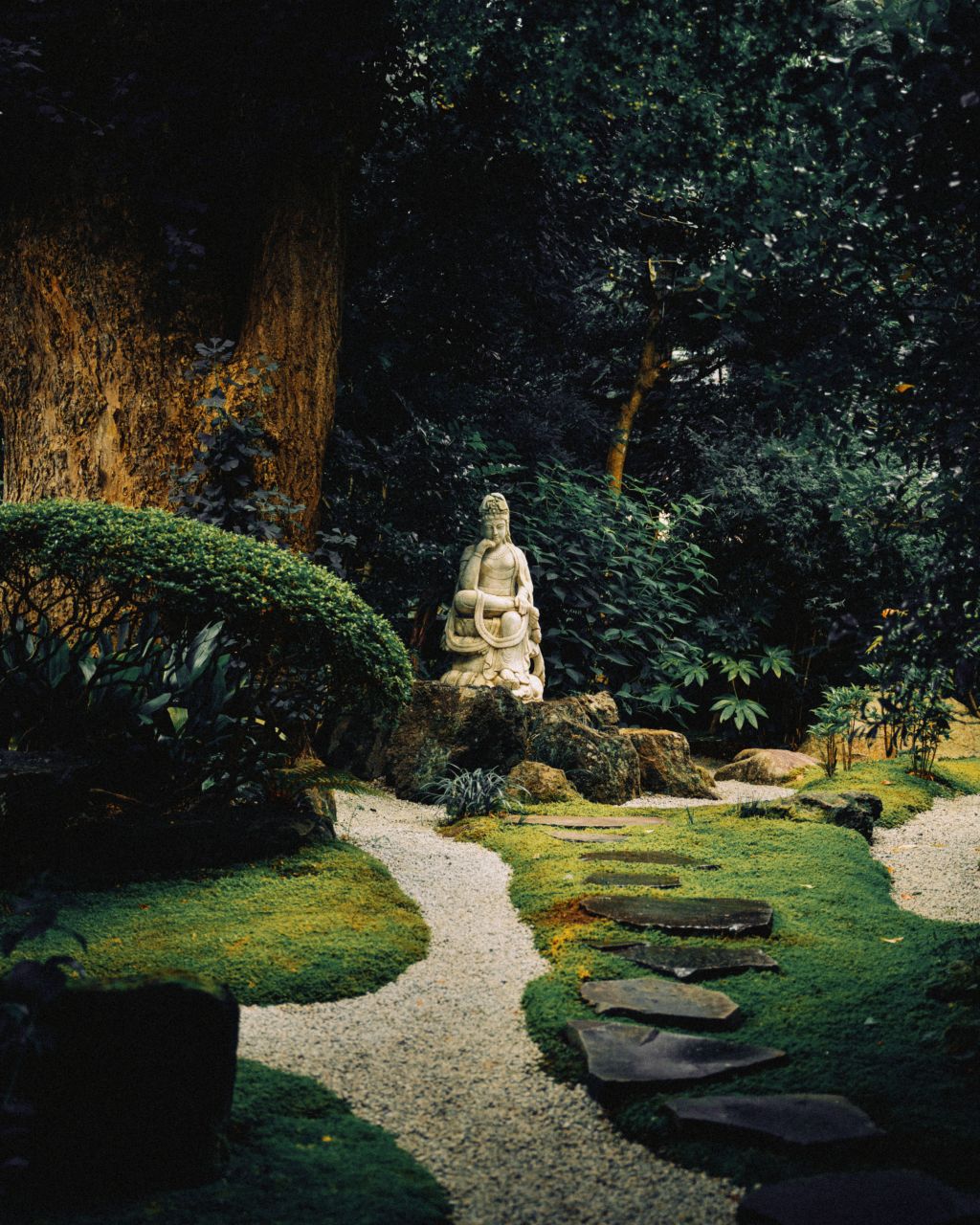
The moment you enter, you can feel the uniqueness of this temple. Small gardens lead to a Zen garden, where sand represents water and stones represent mountains.
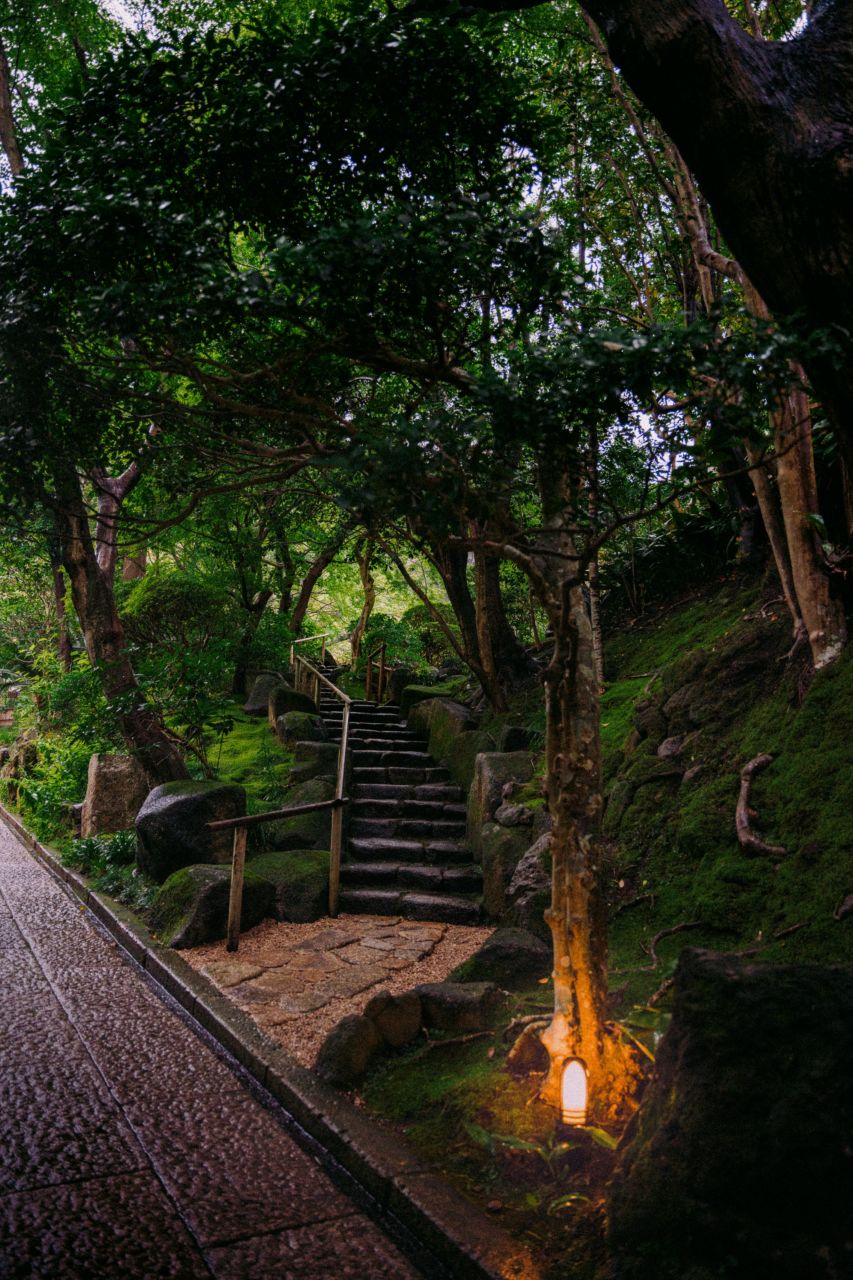
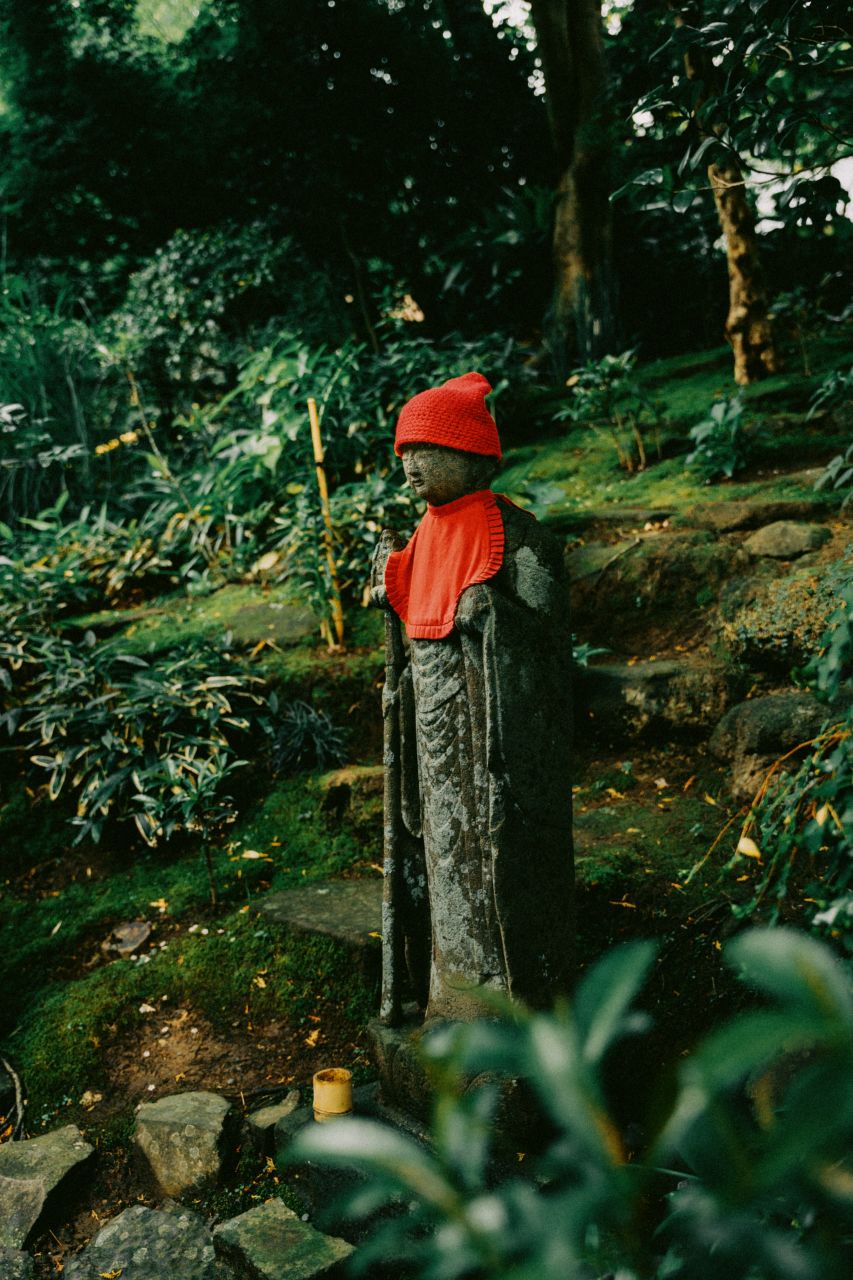
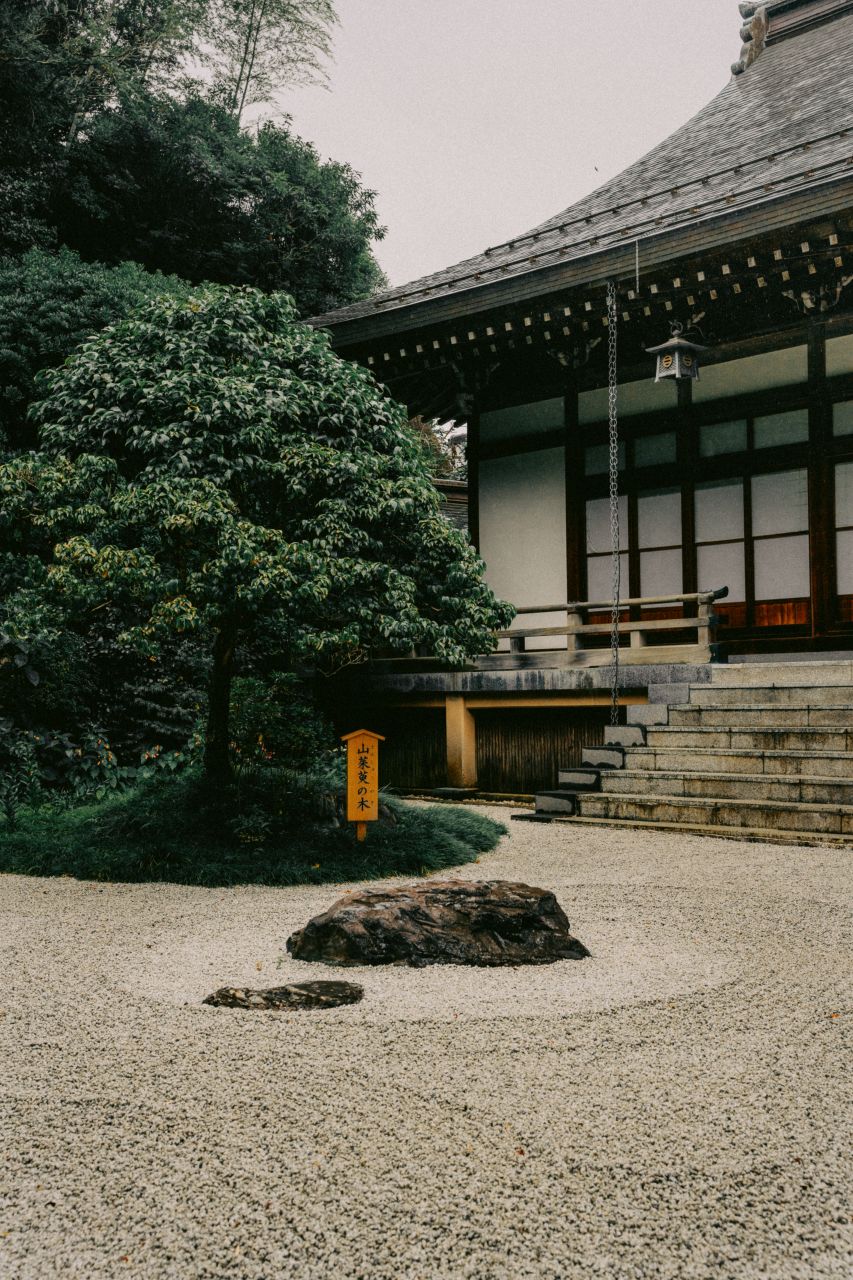
Beyond the Zen garden is a bamboo grove that leads to a small tea house, where you can enjoy matcha and sweets if you visit before 3 p.m. The entire atmosphere is soothing to the mind.
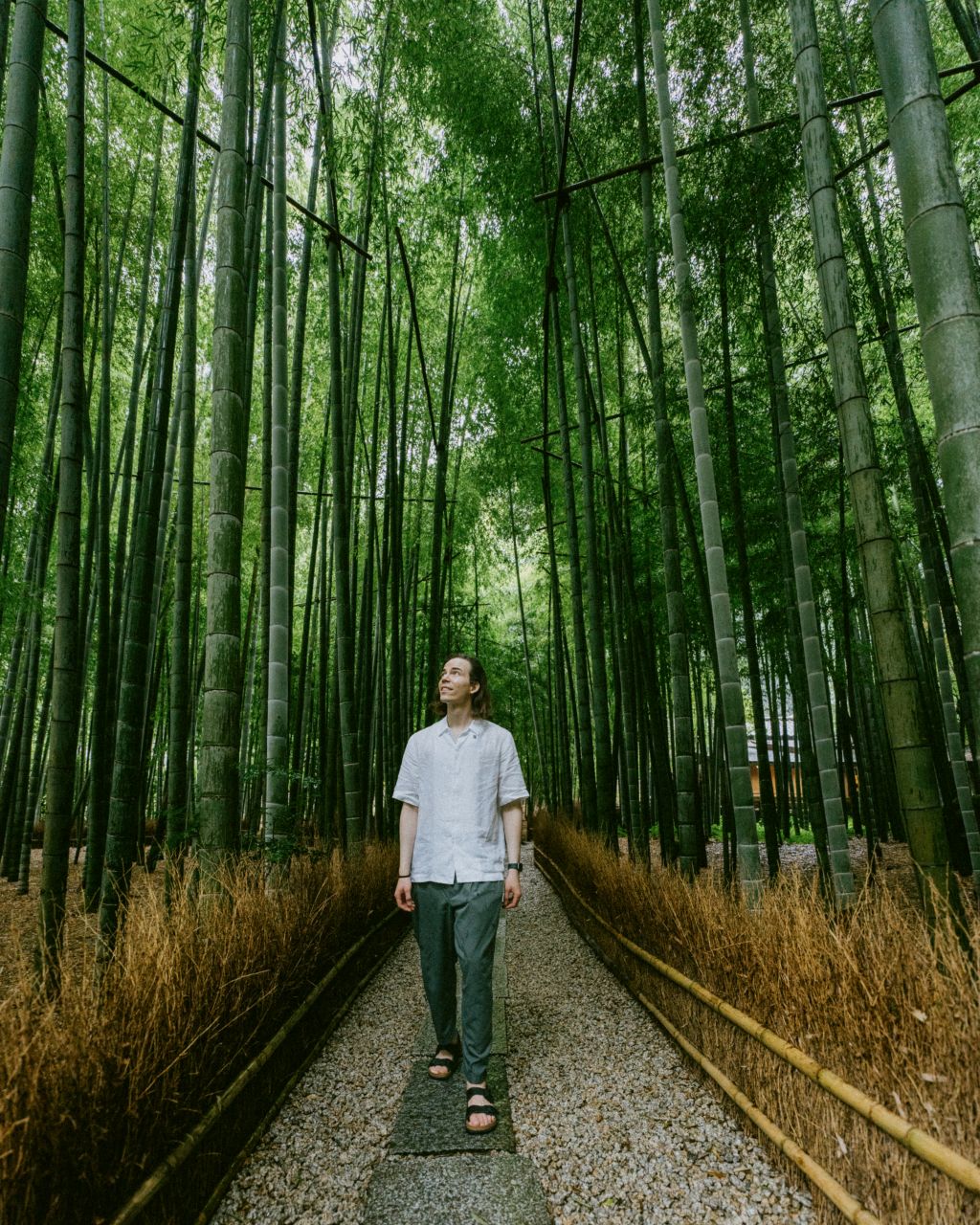
💶 Price: 400 yen (2,52 €)
🕒 Opening hours: 9 am to 4 pm
Last order Matcha at 3:30 pm
3. The Great Buddha of Kamakura (Kotoku-in Temple)
Just before closing time, we made it to our final destination: Kotoku-in Temple, home to the Great Buddha of Kamakura.
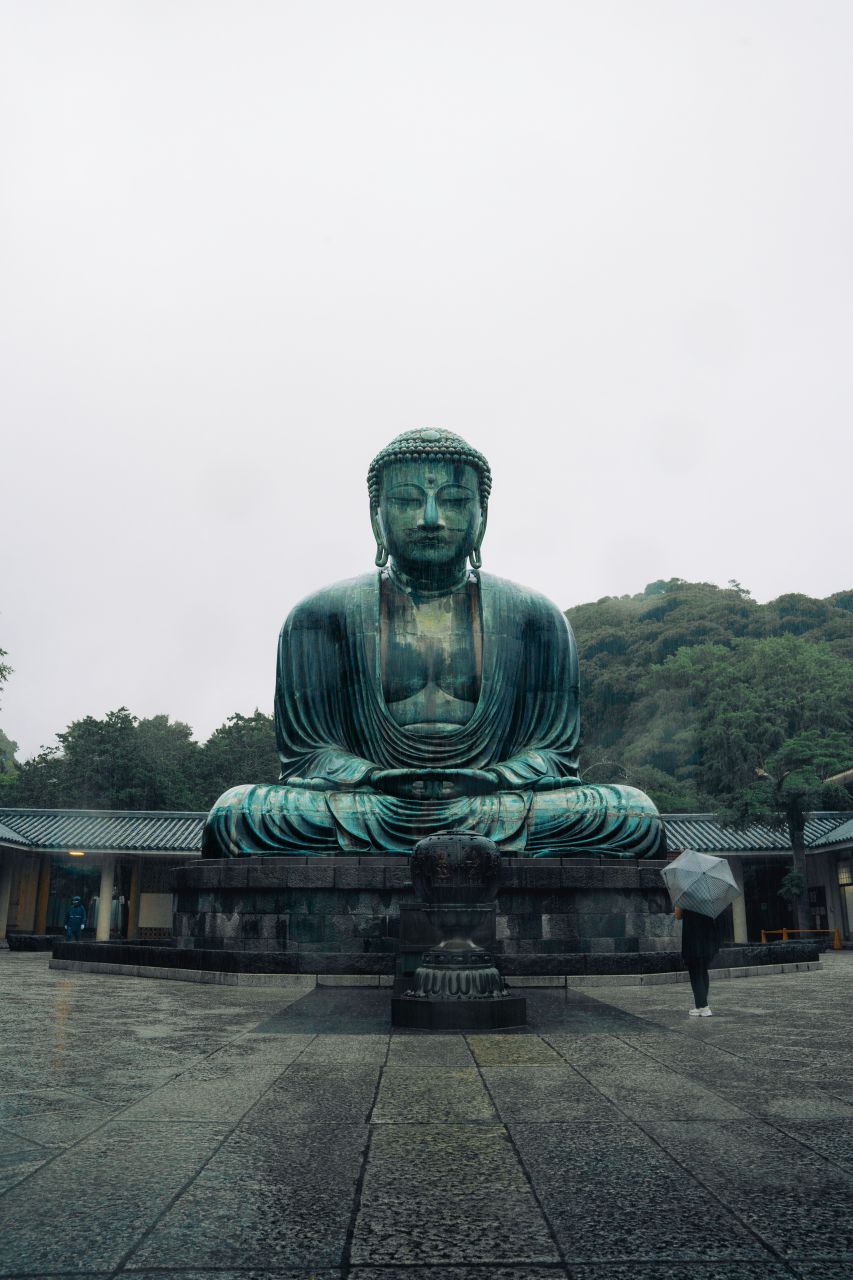
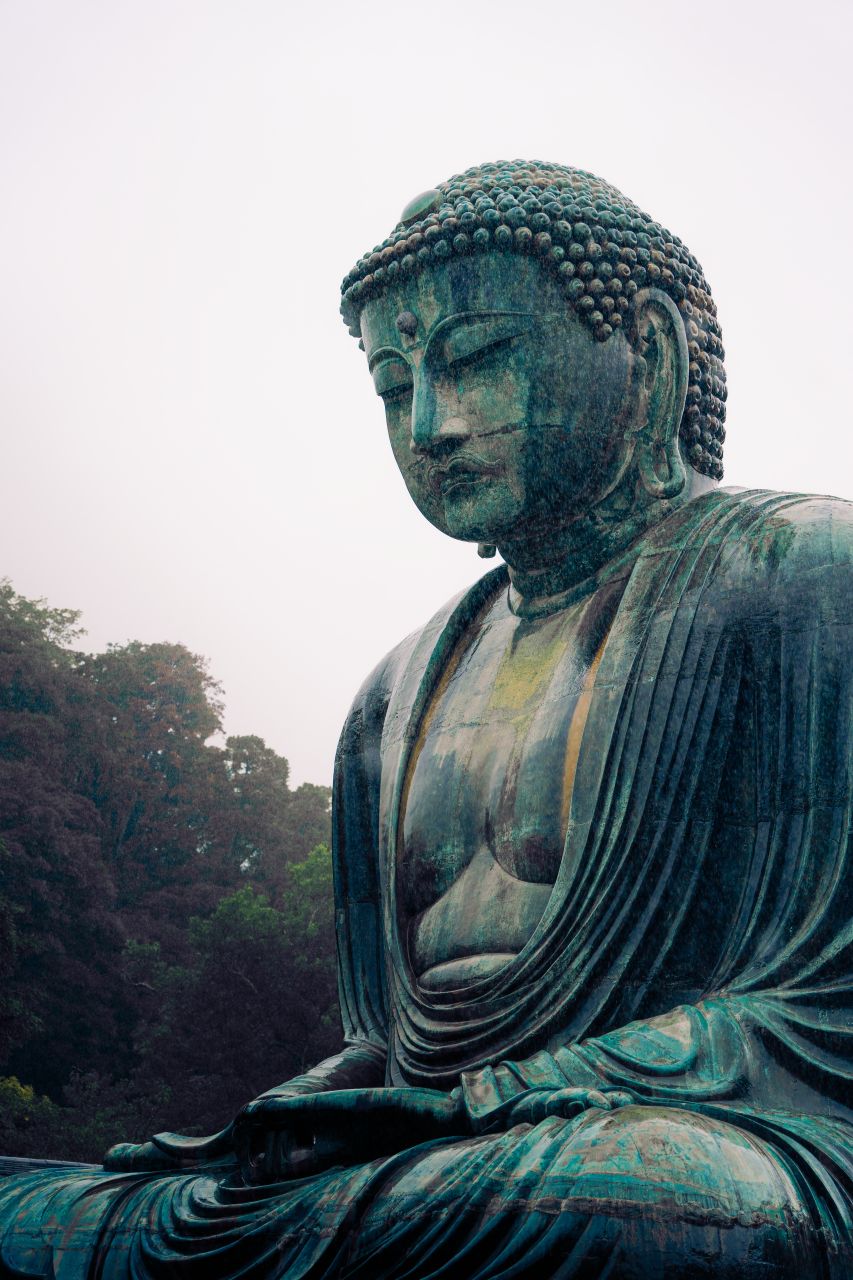
This is the second-largest Buddha statue in Japan; the largest is at Nara’s Todai-ji Temple (check out my post from Nara!). The pouring rain added a special charm, giving the place a calm and meditative atmosphere. Interestingly, the Great Buddha was initially housed inside a temple, but the structure was destroyed by typhoons, and now it stands in the open air.
💶 Price: 300 yen (1,89 €)
🕒 Opening hours: 8 am to 4:30 pm (entrance to the interior of the Great Buddha statue)
8 am to 5 pm (time vary depending on the season)
Best Places to Eat in Kamakura
- Komachi Street offers a variety of restaurants serving local specialties and is also a great place to try Kamakura street food. Since Kamakura is located by the sea, the seafood options are especially fresh. One local specialty is shirasu (whitebait), which can be enjoyed raw.
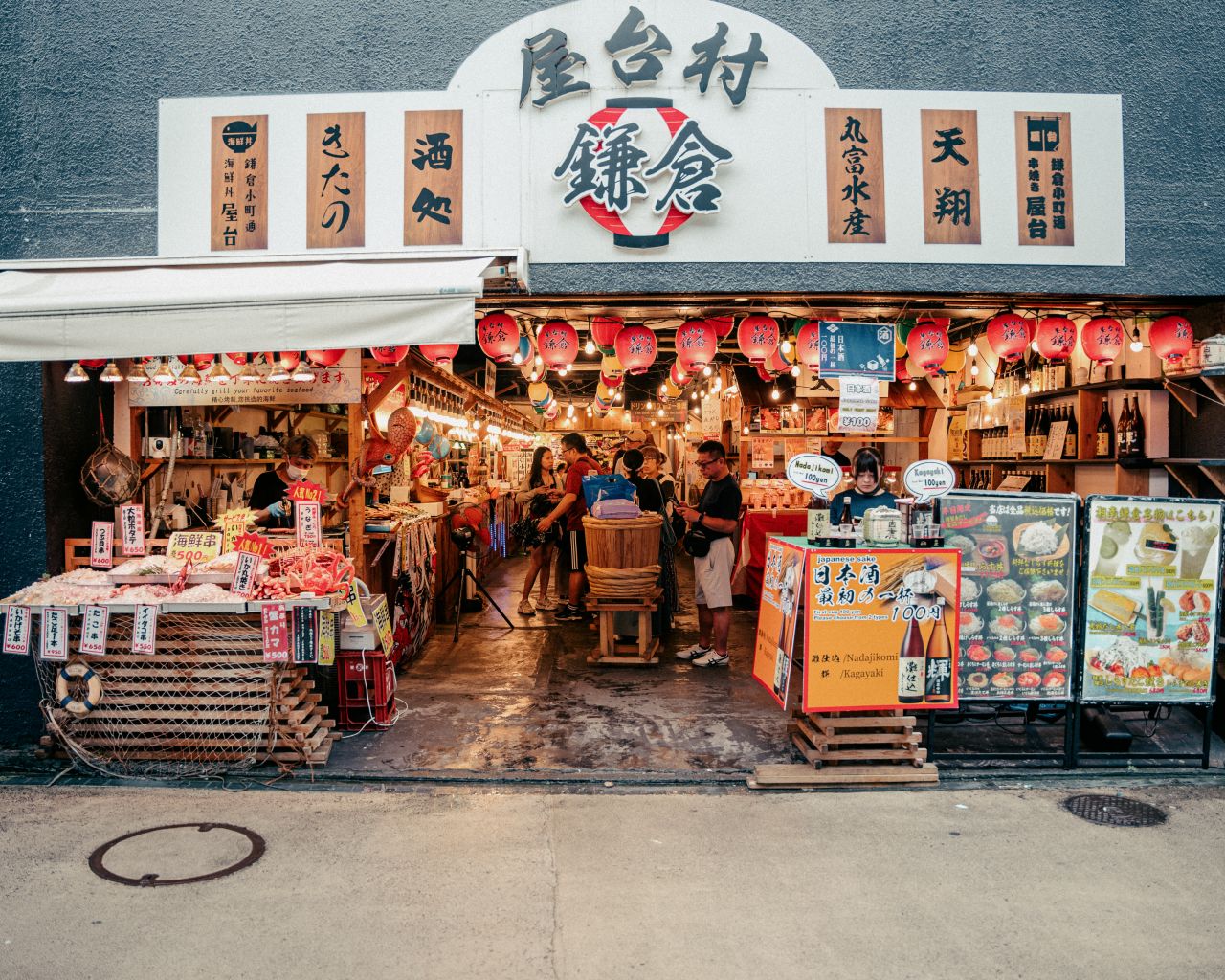
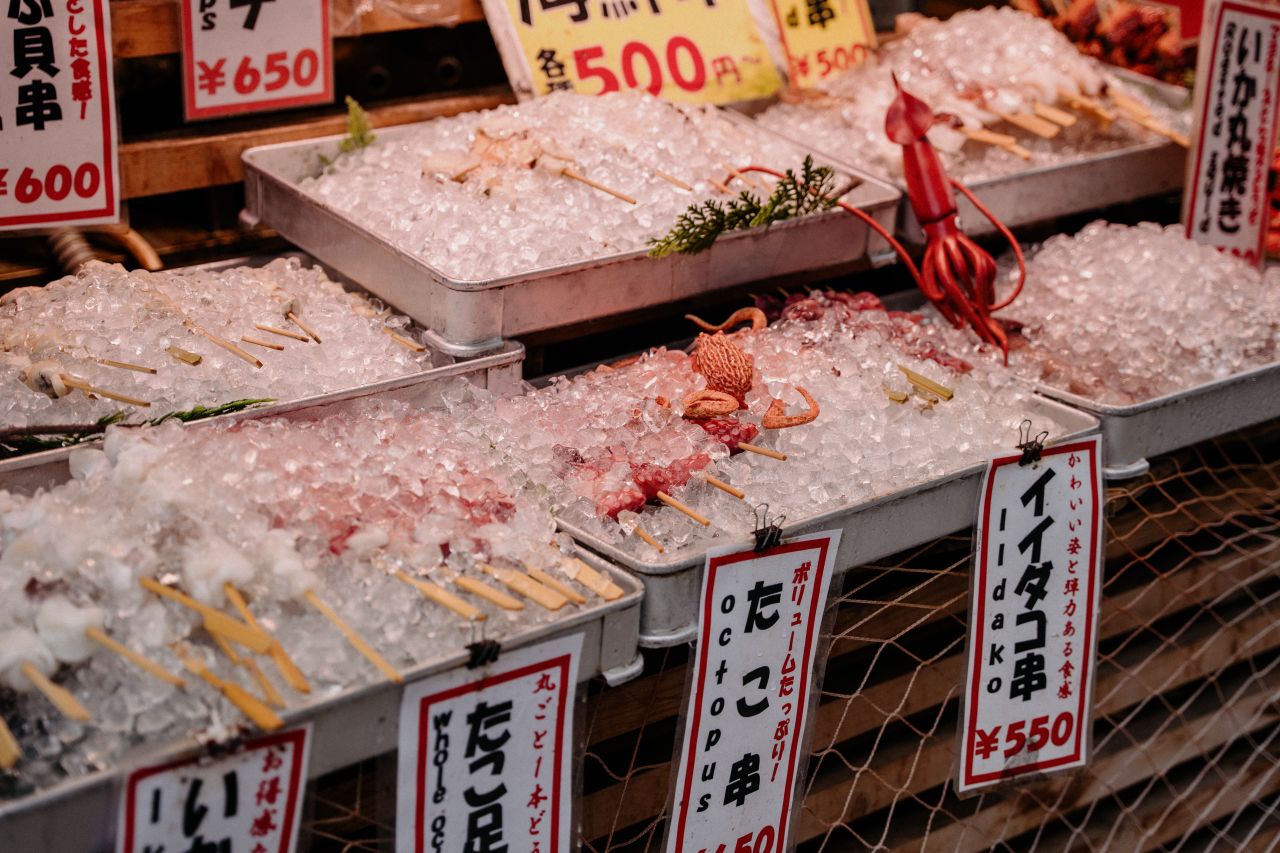
- Wasai Yakura – For Whitebait fish bowl
We dined at Wasai Yakura and ordered a fish bowl meal featuring whitebait along with a selection of other fish. The meal included miso soup, egg custard, and pickled vegetables. It was delicious and filling—a must-try when visiting Kamakura.
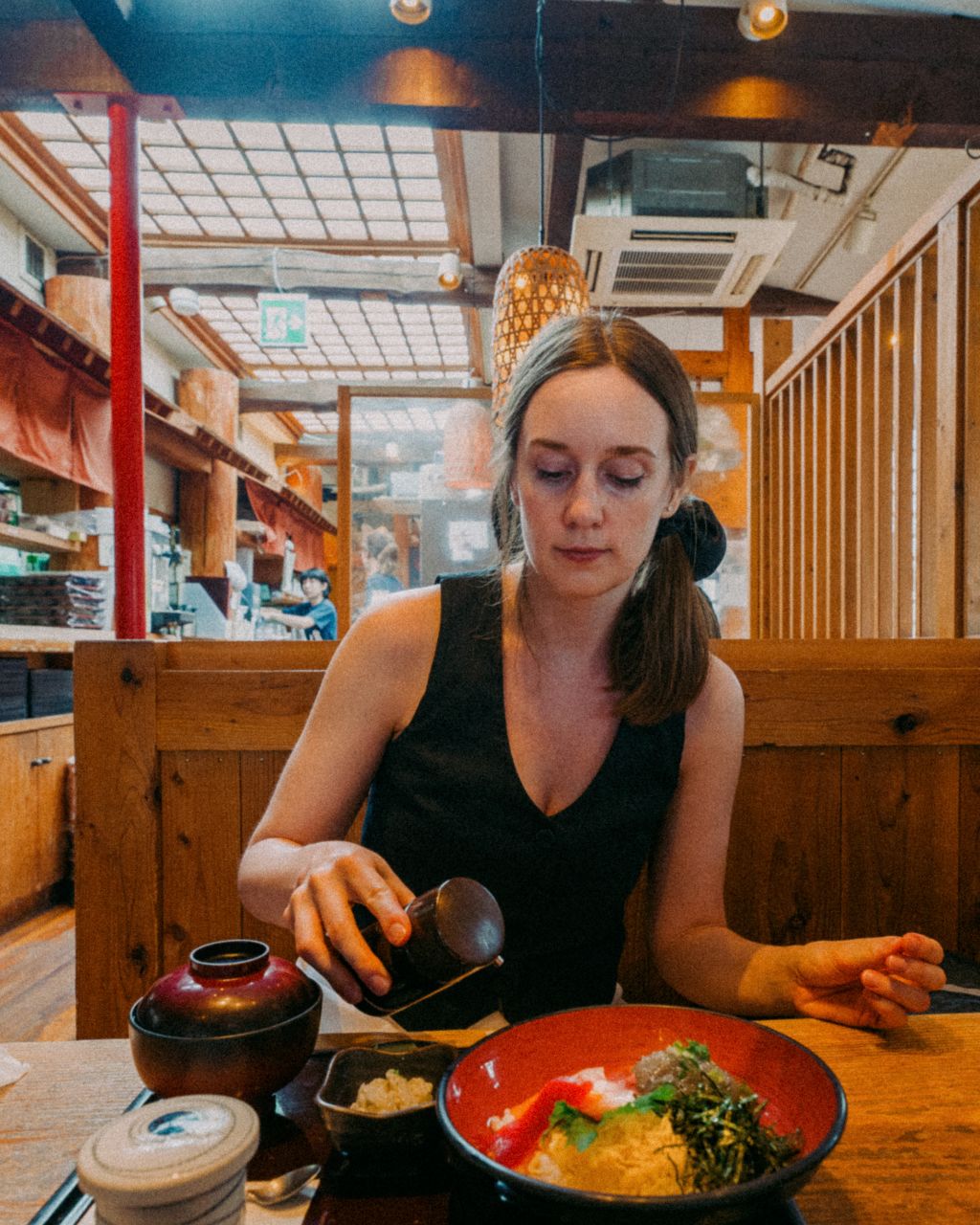
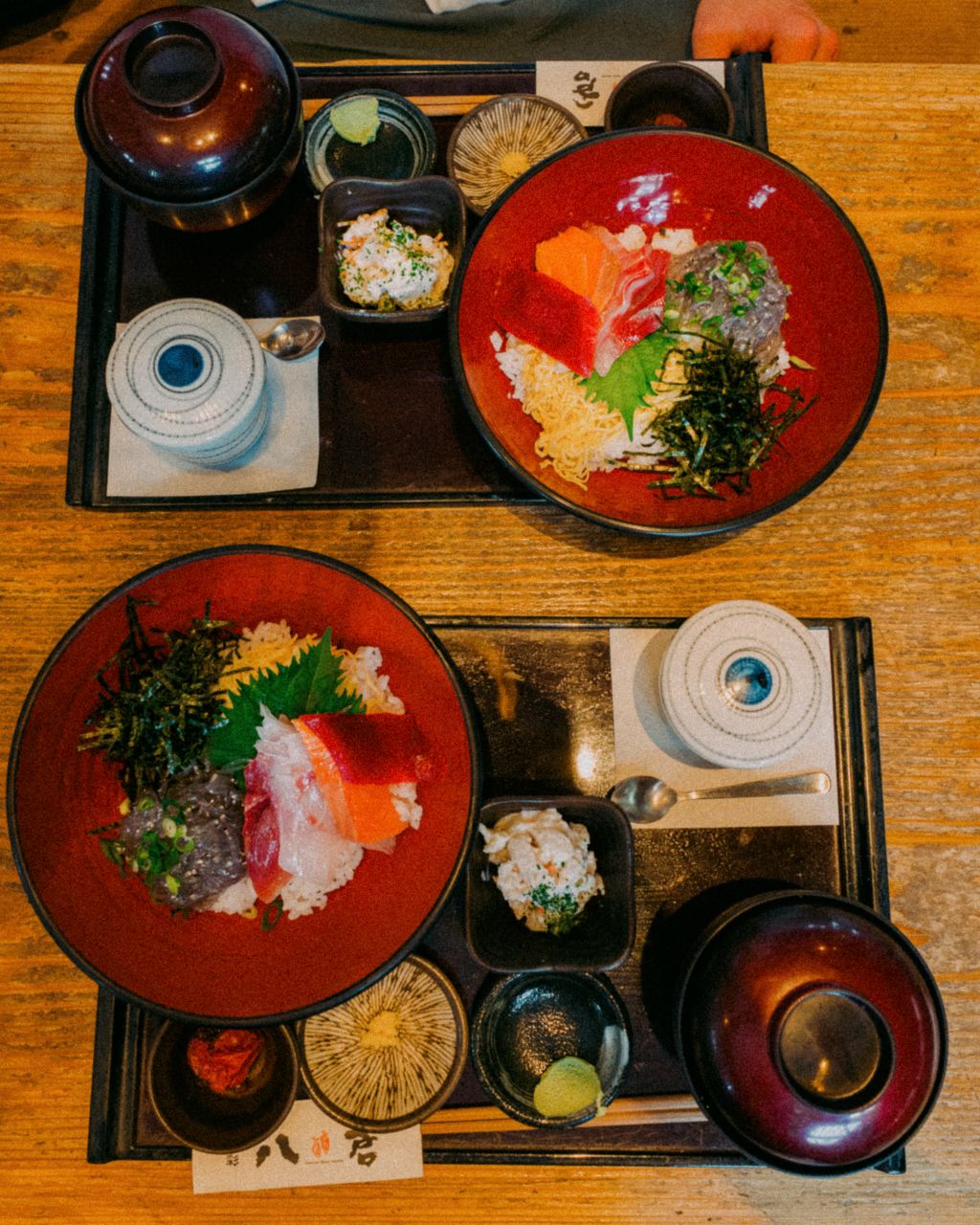
- Sabo Kirara – For matcha and local desserts.
- Tsuki to Matsu – For local soba dishes.
- Cafe Yoridokoro – A breakfast spot with views of passing trains.
- Tomoya Kamakurakomachi – Daibutsu-yaki or Buddha Cake
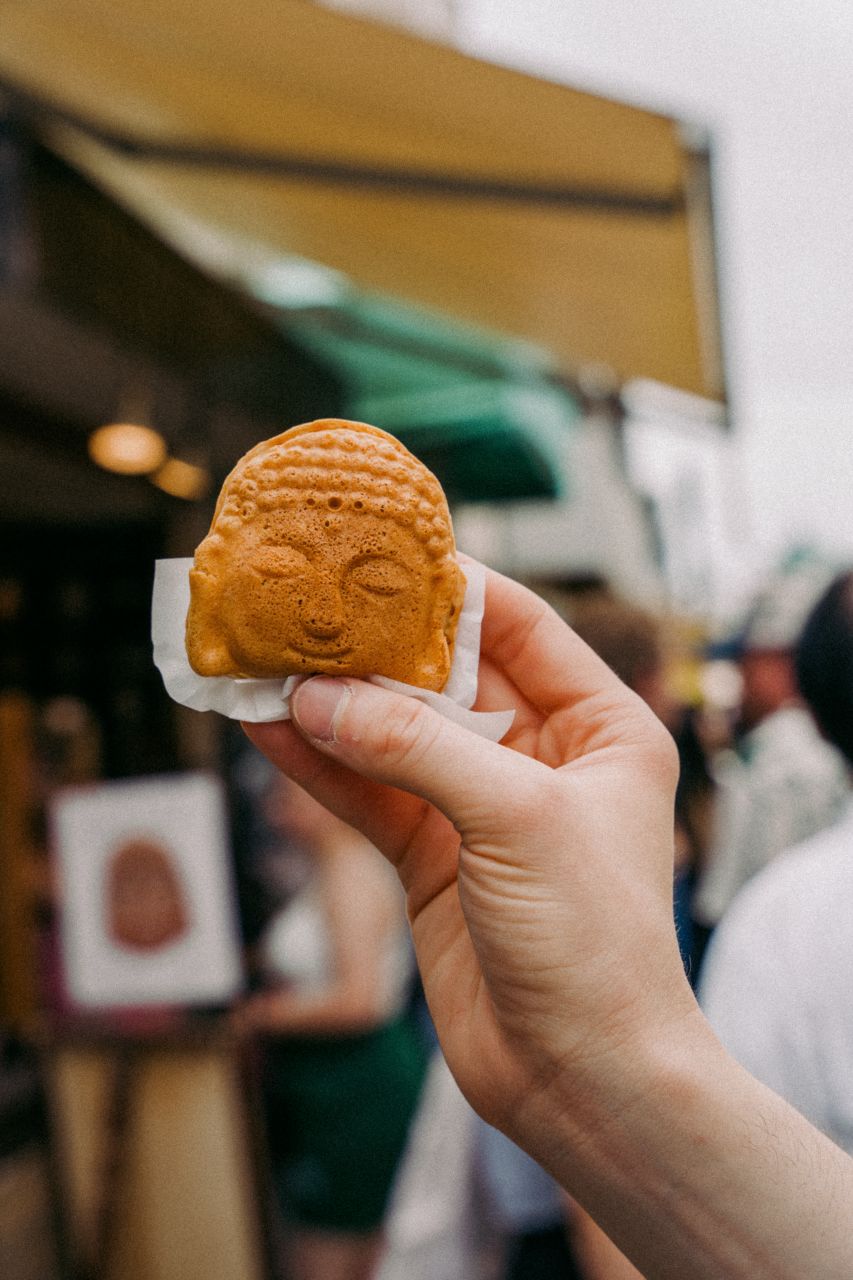
Tips for Planning Your Kamakura Day Trip
Best Time to Visit Kamakura:
- Spring (Sakura season): The best time to visit Kamakura, as with much of Japan, is during the cherry blossom season (Sakura) when you can see Kamakura’s historical sights against the backdrop of blooming trees. However, be prepared for large crowds.
- Early summer (June): If you prefer to avoid crowds, consider visiting after the Sakura season and at the beginning of the rainy season in June, when there are fewer people and the weather is mild.
- Autumn (October-November): Another great time to visit Kamakura is in autumn (October to November) when the leaves turn vibrant shades of red. The weather is mild, warm, but not too hot, and generally sunny.
- Nevertheless, Kamakura can be visited year-round, but be aware that you may encounter inconveniences such as rain or hot temperatures. In these cases, you might need to adjust your plans.
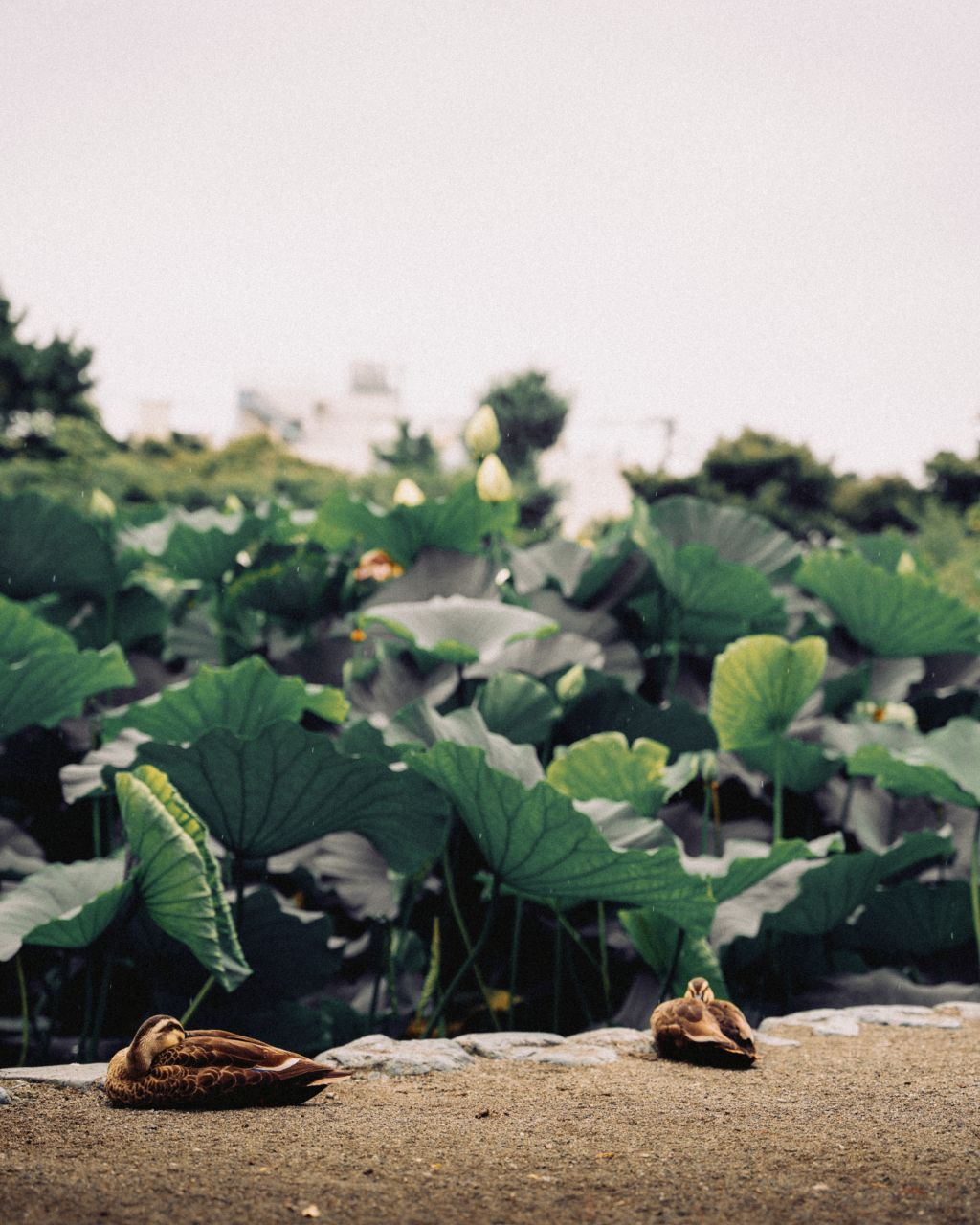
For example, we visited Kamakura during the summer rainy season and experienced rain all day, which forced us to skip some attractions. Despite the weather, Kamakura was still worth visiting, so don’t let weather conditions deter you.
To make the most of your trip, start early in the morning to avoid the crowds from tour groups. Most attractions close around 5 p.m., so plan to visit your top spots before then.
How Much Time Do You Need in Kamakura?
One day is enough to see the main attractions of Kamakura. However, if you want to explore more leisurely or visit nearby Enoshima, consider staying overnight.
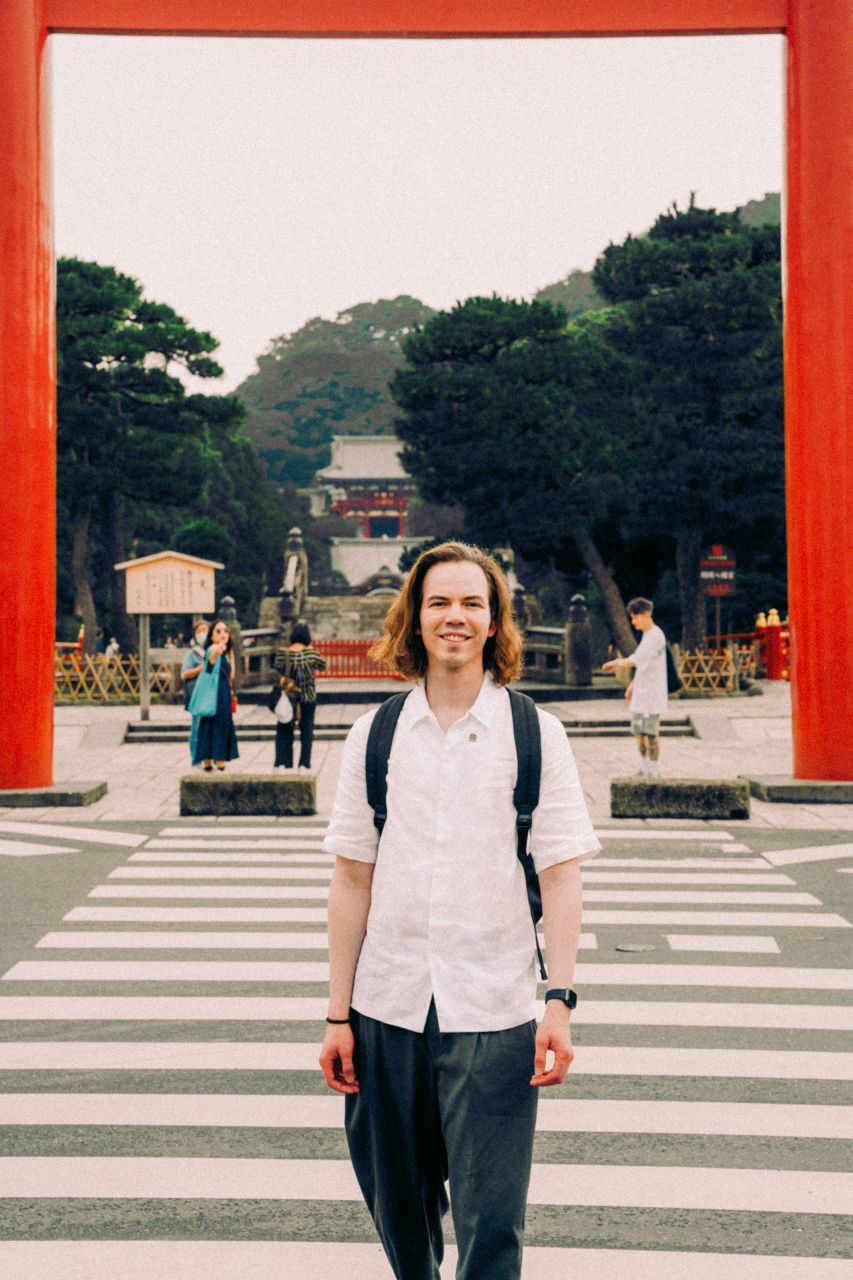
Feel free to leave a comment below if you have any questions about a day trip to Kamakura or if you’d like to share your own experiences visiting this historic town!
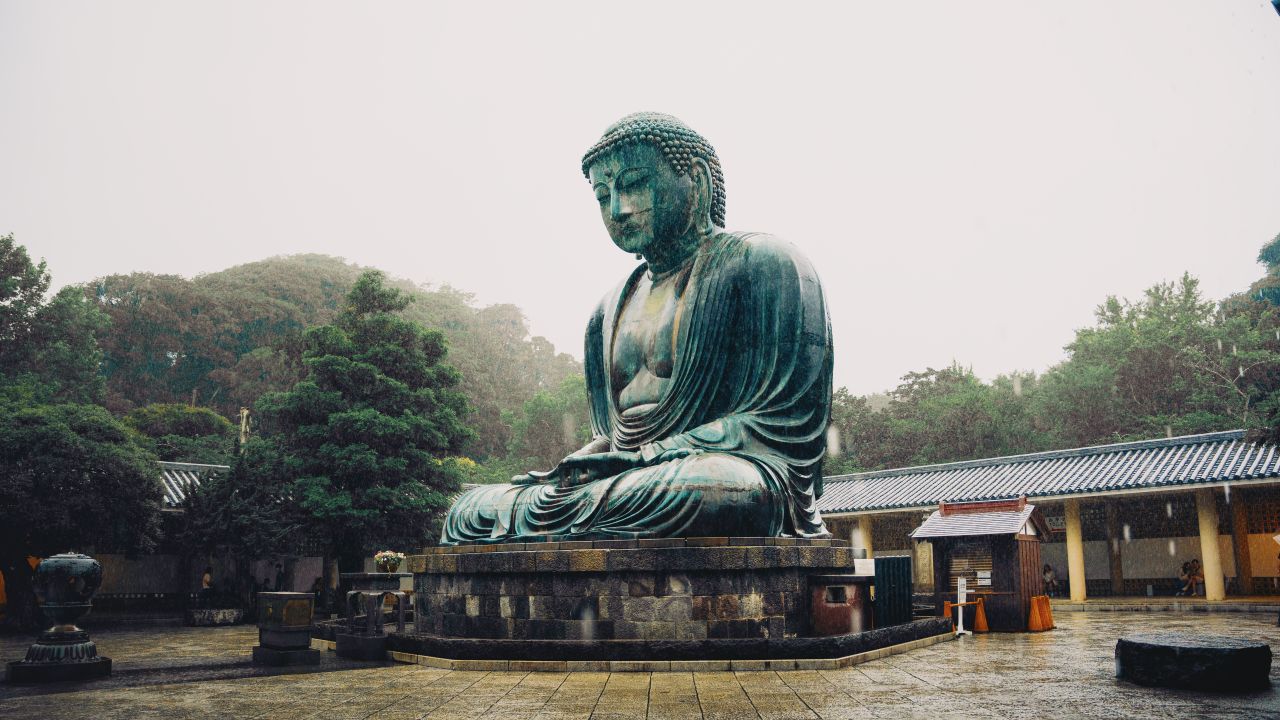
Leave a Reply